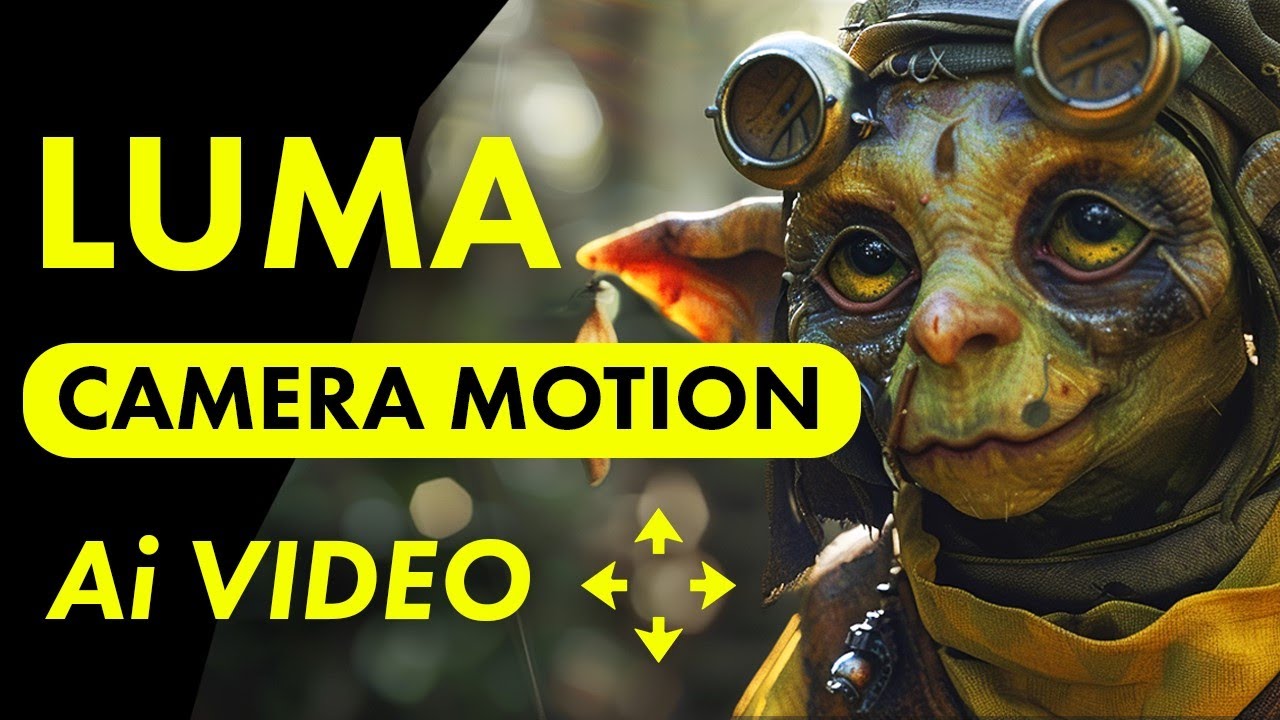Luma Labs Big Update! - Camera Motion Control for Ai Video
People & Blogs

Introduction
Luma Labs has recently unveiled a significant update to its AI video generation platform, introducing a feature that allows users to control camera movement within their AI-generated videos. This capability is crucial for enhancing the visual storytelling of videos, positioning Luma among the top contenders in the AI video generator landscape. After testing the new features myself, I've found that while the addition of various camera motions is promising, the execution possesses certain inconsistencies.
Exploring Camera Motion Controls
Upon signing into Luma, users can easily access these new camera controls by typing "camera" into the prompt, revealing a menu with various options. The feature allows for several different movements:
- Move left, right, up, or down
- Push in (zoom) or pull out (zoom out)
- Pan left or right
- Unique motions like "orbit" (rotates around the subject) and "crane shot" (vertical movement relative to the subject)
The available motions, particularly orbit and crane shots, are not commonly offered by other AI video generators. Hence, there was much anticipation to see how they perform in practice.
I began my testing with a simple prompt for a panoramic shot of Niagara Falls during winter, asking the camera to move right. The generated video succeeded in providing a beautiful view, demonstrating that basic movements, particularly for landscapes, functioned typically as expected.
However, I noted some discrepancies; for instance, requesting upward and downward movements resulted in tilting rather than precise vertical motions. The same was true for the push and pull zoom functions, which worked adequately with text-to-video prompts, but performed inconsistently when using the image-to-video feature.
Orbit and Crane Motions: A Closer Look
Intrigued by the new orbit and crane motions, I challenged Luma to demonstrate these functionalities. My attempt to orbit left ended up incorrectly moving right and zooming into the feet of the subject. When asking to orbit right, the camera movement was executed correctly, but the rendered video revealed issues, such as the subject’s head twisting unnaturally.
When testing the crane shots with prompts featuring statues and monuments, I expected more success given the simplicity of these subjects. However, the camera movements failed to produce the intended vertical motion, often resulting in basic zooms.
Image-to-Video Functionality
The crucial question remains: how does this camera motion control feature perform with image-to-video rendering? I uploaded a close-up portrait and prompted the system to execute a left pan. While lateral movements seemed to work well for portraits, vertical movements did not produce the desired effect. A "move down" prompt yielded no motion at all.
Unfortunately, I found the push and pull zoom actions to be unreliable; the incorrect mapping of camera actions resulted in confusing outputs, essentially reversing the intended motions. The orbit function consistently failed to manifest any noteworthy movement, and the crane functionality similarly fell short of expectations.
Based on my evaluations thus far, while the camera control feature displays potential, it operates more effectively with text-to-video prompts than with image-generated content. Though Luma Labs has made improvements to both text and image-to-video capabilities, the camera motion control feature may require further refinement to offer a more consistent user experience.
For those looking to get the most out of Luma's AI video generation capabilities, additional resources and tutorials can help you hone your video animation skills.
Keyword
- Luma Labs
- AI video generation
- camera motion control
- text-to-video
- image-to-video
- orbit motion
- crane shot
- zoom
- panning
- video rendering
FAQ
1. What new features did Luma Labs introduce?
Luma Labs introduced camera motion controls for AI-generated videos, including options for moving left, right, up, down, zooming in and out, panning, orbiting, and using crane shots.
2. How does the camera motion control work?
Users can activate camera movements by typing "camera" into the prompt, followed by the specific movement they wish to apply.
3. Are the camera motions reliable?
While basic camera motions work well, more advanced movements like orbit and crane shots tend to be inconsistent, particularly with image-to-video outputs.
4. How does the feature perform with text-to-video compared to image-to-video?
The camera motion feature tends to work more consistently with text-to-video prompts than with image-to-video rendering.
5. Can I still produce high-quality videos using Luma's AI generator?
Yes, despite some inconsistencies in camera motion, Luma Labs has made improvements in overall video quality and offers resources to help users create visually compelling videos.

